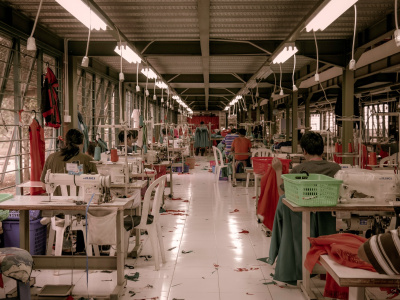
Mandatory environmental due diligence: What is exactly expected of companies?
In April 2020, EU justice commissioner Didier Reynders announced that the European Commission was preparing sustainable corporate governance legislation that would require companies operating in the EU to carry out human rights and environmental due diligence. In essence, this legislation would introduce an obligation for companies to identify, prevent, mitigate and account for how they address human rights and environmental impacts along their global supply chains.
Between April last year and today, the European Commission listened to and consulted with stakeholders. It is expected to present its legislative proposal in autumn this year.
While there is consensus about the interlinkages between human rights and the environment – as negative environmental impacts may infringe on the human rights of people and communities – it is not clear yet how similar environmental and human rights due diligence are in terms of process or methodology. The fact that the EU intends to tackle them both under the same legislative roof, therefore, triggers a number of questions.
Different frameworks
Human rights due diligence entails an obligation of means. Businesses are expected to act with due care and do all they can, as opposed to achieving a given outcome (obligation of result). Does the same hold true for environmental due diligence? Practically thinking of future EU-wide due diligence law, how can companies demonstrate compliance? Should environmental impacts be defined? And if so, should specific performance targets and baselines be set?
The United Nations Guiding Principles on Business and Human Rights are globally acknowledged as the normative standard for human rights due diligence, together with the Organisation for Economic Co-operation and Development (OECD) guidelines for multinational enterprises, and refer to the International Bill of Human Rights and the core conventions of the International Labour Organization.
A specific framework for environmental due diligence is only available in the shape of Chapter VI of the OECD guidelines. But while this chapter describes which steps businesses should undertake in general terms, it does not spell out the exact scope of ‘environment’ and ‘environmental impacts’.
Therefore, which reporting standards would be recommended for environmental due diligence? Should they differ, depending on whether environmental due diligence concerns biodiversity, deforestation, circular economy, climate change or sustainable use of resources? And if an impact assessment resulted in the identification of negative environmental impacts, would there be an expected level of mitigation of those impacts?
The complexities of environmental due diligence
To try and answer some of those questions and to shed some light on the complexities surrounding the interlinkages between human rights and environmental due diligence, AIM-The European Brands Association, amfori and a handful of other business associations recently organised a workshop on environmental due diligence, bringing together practitioners, regulators, civil society organisations and academia.
Without having the ambition to offer solutions, the workshop demonstrated that there is no one-size-fits-all approach to operationalising due diligence when it comes to biodiversity for instance. It also became clear that one single biodiversity metric is not feasible. Instead, engaging in nature-positive actions that are locally meaningful and encouraging alignment with existing conservation goals are key. When it comes to climate change, attempting to measure progress makes sense only via science-based targets.
The workshop also confirmed that existing authoritative standards such as the OECD guidelines should form the basis of any future legal requirements. To offer further clarification, however, the guidelines themselves need updating – since Chapter VI provides only some high-level guidance for an integrated model for environmental due diligence.
The workshop also unveiled similarities and differences between the two processes. If both forms of due diligence entail the gathering of information up and down the supply chain, environmental due diligence requires the collection of extensive amounts of comparable data and robust scientific evidence. Both processes rely on building capacity with suppliers and business partners, and both can benefit from the support of industry-driven initiatives too.
Environmental due diligence in practice
So what does this mean for the sustainable corporate governance legislative discussions?
Legislation is key to ensuring a true level playing field. There is a clear need, however, to clarify what the terms ‘environment’ and ‘environmental impacts’ would include exactly from a legal perspective. Looking at the contributions of various stakeholders on this topic, it seems that there is no uniformity of views regarding the precise scope of this term.
For instance, the European Commission’s consultation on sustainable corporate governance asked whether environmental due diligence should “require alignment with the goals of international treaties and conventions based on the agreement of scientific communities, where relevant and where they exist, on certain key environmental sustainability matters, such as for example the 2050 climate neutrality objective, or the net zero biodiversity loss objective and could reflect also EU goals”.
The European Parliament resolution on corporate accountability (10 March 2021) provides a list of environmental factors that should be accounted for as part of environmental due diligence. This list includes “climate change, air and water pollution, deforestation, loss in biodiversity, and greenhouse emissions”.
Then there is the question of how to operationalise an environmental due diligence process. Chapter VI of the OECD guidelines suggests that this could be done through an environmental management system, which includes collection and evaluation of environmental, health and safety impacts of activities; establishment of measurable objectives and targets for improvement (in line with relevant legislation and international treaties); and regular monitoring and verification of progress. Will having in place an environmental management system be considered as fulfilling one’s due diligence obligations, or at least partially?
It is important that the EU provides businesses – and especially small and medium-sized enterprises – practical guidance on how to operationalise environmental due diligence. It also needs to offer additional support, including capacity building and tools that facilitate compliance, building on existing due diligence approaches provided by collaborative initiatives.
Valentina Bolognesi is Senior Social Policy Advisor at amfori, the leading global business association that promotes open and sustainable trade. amfori’s mission is to enable each of its members to enhance human prosperity, use natural resources responsibly and drive open trade globally.
Katrin Recke is Senior Sustainability, CSR & Supply Chain Manager at AIM, the European Brands Association. AIM’s mission is to create for brands an environment of fair and vigorous competition, fostering innovation and guaranteeing maximum value to consumers now and for generations to come. AIM is also home to AIM-Progress, its global responsible sourcing programme.
The views are those of the authors and the associations they represent, and not necessarily those of ECDPM.


